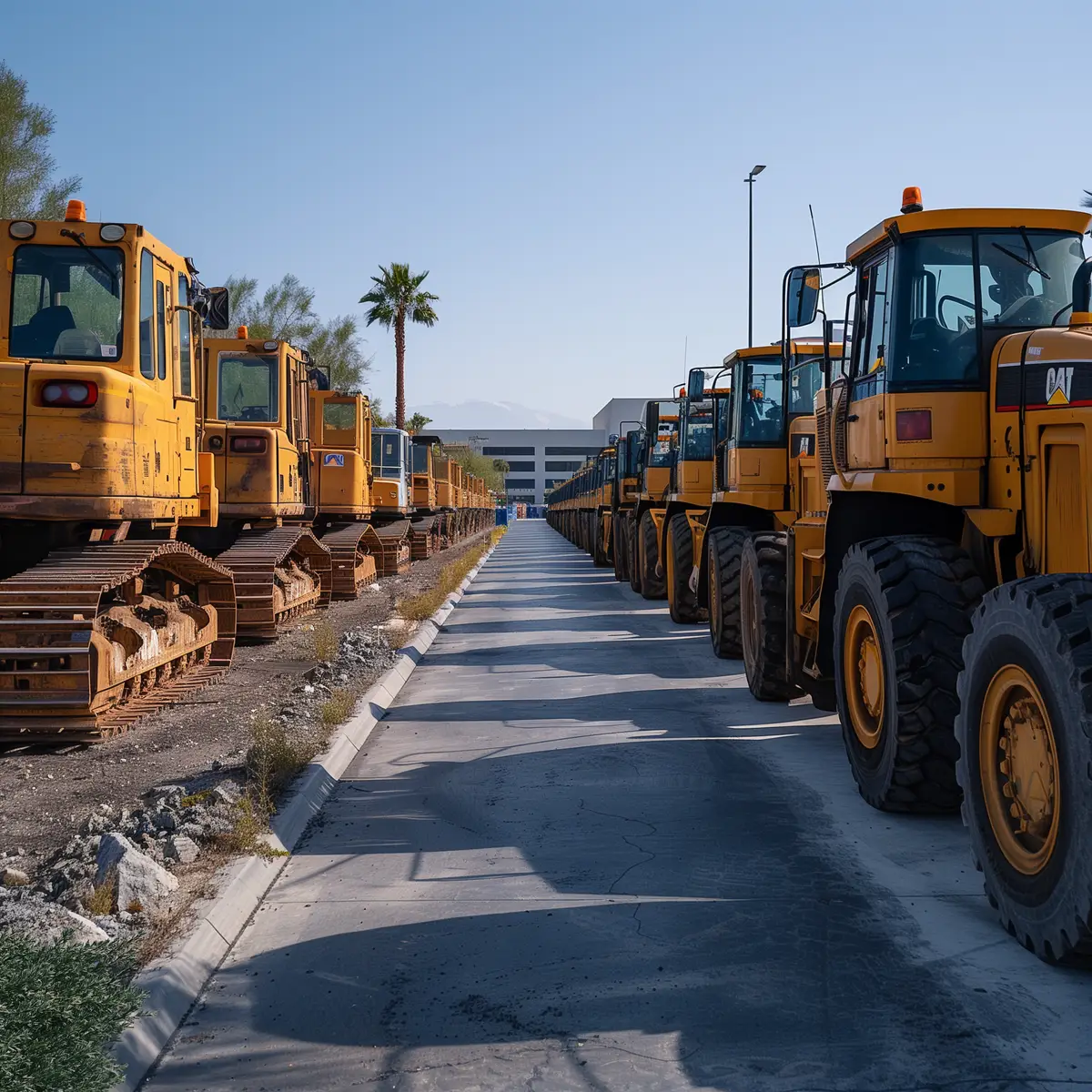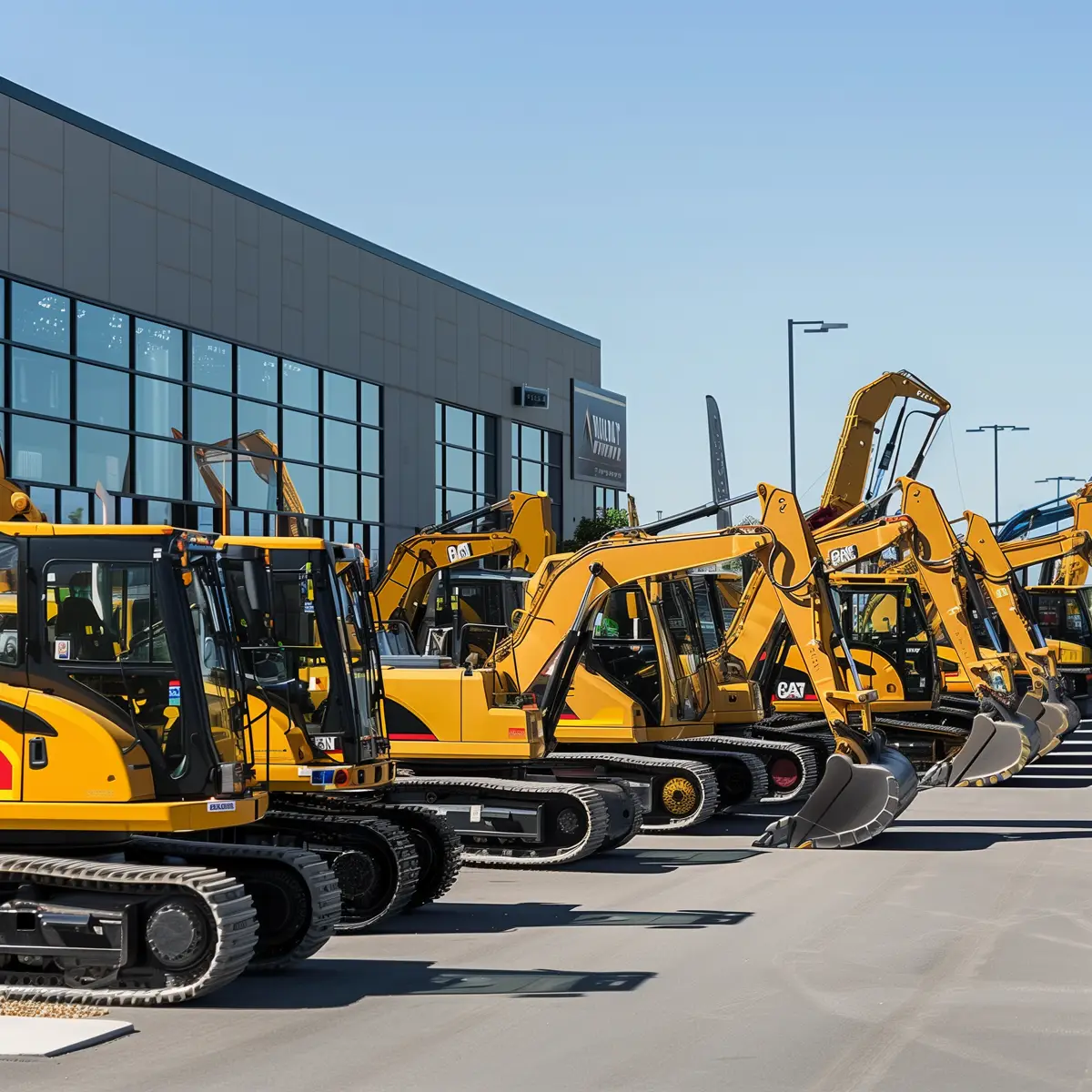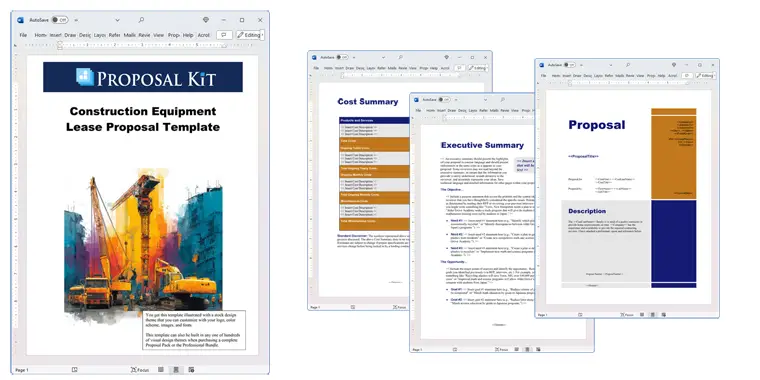How to write your Construction Equipment Lease Proposal Template
We include this 14 page layout with every Proposal Pack. If you want this template to have a different visual design theme than the one illustrated here, purchase any Proposal Pack design and create this template using the purchased design theme. This template is included in every Proposal Pack. If you get a Proposal Pack or the Professional, you can also make any variation of this template with different chapters to suit your needs.
We typically include more chapters in the templates than most people will need to give everyone more variety in the chapters they may need. You can trim down a long template by removing pages you do not need or combining multiple chapter topics into one page.
 DOWNLOADABLE, ONE-TIME COST, NO SUBSCRIPTION FEES
DOWNLOADABLE, ONE-TIME COST, NO SUBSCRIPTION FEESYou can also create countless variations of this document to suit your needs using the included library of 2200+ chapters if ordering a Proposal Pack or Professional.
 What Our Clients Say
What Our Clients SayMany thank for such amazing templates you created for us. I purchased the best for my business."
Related Article
Related Video
Related Templates
- Leasing Property for Farming or Ranching Proposal
- Equipment Leasing and Service Proposal
- Heavy Equipment Sales and Service Proposal
- IT Equipment Maintenance and Repair Services Proposal
- Equipment Maintenance and Repair Services Proposal
- Equipment Leasing Proposal
- Equipment or Machinery Systems Upgrade Proposal
- Lease Agreement Proposal Template
What's the best way to write your construction equipment lease proposal?
Creating a well-structured construction equipment lease proposal is easy with Proposal Kit's template library and software package. With Proposal Kit, you gain access to professionally designed templates, a powerful line item quoting database for detailed cost summaries and estimates, and an integrated AI writer that quickly generates personalized first drafts tailored to your company's unique circumstances. The software even includes a PowerPoint creation feature, allowing you to turn your finished proposal into a slideshow for presentations.
Whether you need to outline lease terms, specify the types of construction equipment offered, detail your financial arrangements, or showcase company credibility, Proposal Kit provides all the necessary building blocks. The solution is proven - it's already helped thousands of businesses win contracts and formalize agreements with clarity and professionalism.
Are you facing the task of writing an equipment leasing proposal for an upcoming deal? If you're looking to lease heavy machinery, manage expectations, or formalize a business relationship, Proposal Kit is designed to help you succeed.
What Types of Projects Are Construction Equipment Lease Proposals Written For?
Construction equipment leasing agreements are important for a wide variety of projects across industries. Whether you are providing heavy machinery or seeking specialized tools for a short-term need, these proposals help set clear terms and expectations. Here are some typical situations where equipment leasing proposals are commonly required:
- Leasing excavators for large-scale residential developments
- Supplying cranes for bridge construction projects
- Renting bulldozers for road expansion jobs
- Providing backhoes for municipal infrastructure repairs
- Offering trenchers for pipeline installation projects
- Leasing forklifts for warehouse construction
- Supplying aerial work platforms for high-rise building maintenance
- Renting compactors for landfill management
- Delivering concrete mixers for commercial building sites
- Providing generators for off-grid construction work
- Offering skid steer loaders for landscaping projects
- Leasing graders for airport runway upgrades
- Supplying dump trucks for mining operations
- Renting water trucks for dust control on job sites
- Providing drilling rigs for geotechnical surveys
- Leasing mobile lighting towers for night construction
- Supplying scaffolding for building restoration
- Renting asphalt pavers for highway resurfacing
- Providing pile drivers for dock construction
- Leasing loaders for agricultural building projects
Chapters this template is built with
There is no single template that meets every possible leasing scenario, but Proposal Kit allows you to build a custom equipment rental or leasing package tailored to your unique project requirements. With thousands of chapters to choose from, you can assemble a professional proposal that covers every angle. The following selection shows how Proposal Kit's templates in Word format can be used to address the key topics for a construction machinery lease agreement.
Cover Letter
The Cover Letter template is your first chance to make an impression on the prospective client. In a construction equipment lease proposal, you can use this section to introduce your leasing company, explain your understanding of the client's project, and state why your company is uniquely qualified to provide the necessary equipment. This is also where you can summarize your commitment to service quality, equipment reliability, and customer support, setting a positive tone for the document that follows.
Title Page
The Title Page template ensures your proposal looks polished and credible. On this page, you will include the proposal's official name (such as "Equipment Lease Proposal for XYZ Construction Project"), your company's logo, address, and contact information, and the date. This professional presentation creates a sense of organization and readiness, signaling to the recipient that your business handles leasing requests with seriousness and attention to detail.
Table of Contents
The Table of Contents template allows you to structure even the most complex equipment leasing proposal so that all information is easy to locate. In this section, you list every chapter and subsection, such as equipment details, leasing terms, and financial summaries. For construction equipment lease proposals, having a clear table of contents ensures that decision-makers can quickly reference critical information, supporting faster review and approval.
Executive Summary
The Executive Summary template is where you concisely highlight the most important topics of your proposal. Here, you'll describe the project at hand, summarize the types of equipment to be leased (such as loaders, cranes, or generators), note any special features or service guarantees, and outline the overall financial arrangement. This section allows busy executives to get an immediate sense of your offer's value and how it aligns with their project goals.
Needs Assessment
The Needs Assessment template helps you demonstrate a thorough understanding of the client's project requirements. In a construction equipment lease proposal, you will use this chapter to analyze the scope of work (such as road construction, bridge building, or site clearing) and link those needs directly to your recommended equipment. By referencing the client's goals and challenges, you show that your leasing solution is tailored, not generic.
Tools
In the Tools template, you go beyond just the large machinery and specify any smaller or specialized tools included with the lease package, such as laser levels, jackhammers, or safety gear. This level of detail is important in construction because it removes ambiguity and ensures the client knows exactly what is included (and what is not), reducing the risk of project delays due to missing tools.
Equipment
The Equipment template is where you provide a full inventory of the machines offered for lease. For a construction equipment lease proposal, this could include excavators, bulldozers, forklifts, and more. Here, you'll specify make, model, year, capabilities, maintenance records, and any certifications. This reassures the client that your machines are up to task and compliant with relevant standards.
Heavy Equipment
The Heavy Equipment template allows you to dive deeper into the specifics of the larger, critical pieces of machinery. For example, you might highlight a crane's maximum lifting capacity, the fuel efficiency of bulldozers, or the safety features of aerial work platforms. You can also include maintenance histories and inspection certificates to build trust and demonstrate that your fleet is reliable and well-maintained.
Leasing
The Leasing template lays out all the legal and practical terms of the equipment lease. In this section, you describe the duration of the lease, delivery and pickup arrangements, insurance requirements, liability provisions, maintenance obligations, and options for extending or terminating the agreement. This clarity helps prevent misunderstandings and ensures that both parties are aligned from the beginning.
Payment Schedule
The Payment Schedule template is important for financial transparency. Here, you outline the timing and amounts for all payments: the initial deposit, recurring lease payments, due dates, and any late fee penalties. For construction equipment lease proposals, this chapter is often paired with a calendar or Gantt chart to align equipment use with project milestones, reducing financial surprises down the line.
Cost Summary
The Cost Summary template utilizes Proposal Kit's quoting database to generate a detailed breakdown of all costs associated with the lease - rental rates, optional add-ons, taxes, delivery fees, and more. Presenting this information in a clear, itemized table allows the client to see the full cost picture at a glance, compare options, and make informed decisions.
Company History
The Company History template is your opportunity to build credibility and differentiate your business from competitors. In this section, you share your company's background, years in operation, major accomplishments, industry certifications, and previous experience with similar construction projects. This reassures the client that you are a stable, established partner with a strong track record.
References
The References template lets you provide testimonials, contact details for previous clients, or short case studies of successful past equipment leases. In construction equipment lease proposals, this chapter helps to establish trust and demonstrate your ability to deliver as promised. Strong references can make the difference in winning a competitive bid.
Back Page
The Back Page template gives your proposal a professional finish. Here, you can repeat your company's contact details, website, and social media channels, include any legal disclaimers about the proposal, and add a sincere thank-you or invitation for follow-up questions. This final touch reinforces your professionalism and makes it easy for the client to take the next steps.
Use cases for this template
Streamlining Cranes and Equipment Leasing for Bridge Construction
The Challenge
At Apex Bridgeworks, the stakes were high: a multi-million-dollar bridge construction contract was within reach if they could secure the right heavy cranes and lifting equipment under competitive lease terms. The client demanded a comprehensive proposal that covered technical equipment specifications, maintenance schedules, insurance details, and a clear financial breakdown. Lucas, the project manager, found himself under pressure - he had to gather and organize an extensive array of information, but his previous attempts resulted in fragmented documents that lacked cohesion and polish. The risk of losing the contract to a competitor with a more professional offering weighed heavily on him.
The Solution
Determined not to let this opportunity slip away, Lucas chose Proposal Kit's template and software package as his foundation. With its library of construction equipment leasing templates, he could instantly access standardized sections for equipment lists, operational procedures, and legal terms. The software's integrated quoting database meant cost summaries and payment plans could be generated with precision, eliminating the manual errors he had feared. Most importantly, the AI Writer transformed his approach, taking raw data about the bridge project, client needs, and equipment specs to create clear, persuasive, client-tailored narrative content that elevated the entire proposal.
The Implementation
Lucas began by mapping out every requirement the client had for equipment leasing, then selected relevant Proposal Kit chapters, such as Heavy Equipment, Leasing, and Cost Summary. The AI Writer processed details about the lifting capacities, safety certifications, and project timelines, producing first drafts that Lucas could review and refine. He used the quoting tool to enter line-item costs for each crane, including delivery and maintenance, which auto-populated in the document. Once finalized, Lucas used Proposal Kit's PowerPoint creation feature to build a slideshow - complete with visuals, bullet points, and charts - making the complex proposal easy to digest during his scheduled client review.
The Outcome
The result was a polished, organized proposal that addressed every question the client had, backed by a professional PowerPoint presentation that visually highlighted the proposal's strengths. The client praised the clarity and depth of Apex Bridgeworks' submission, especially appreciating the financial transparency and equipment details. During the in-person review, Lucas used the PowerPoint to guide the discussion, allowing decision-makers to quickly understand key points. Ultimately, the client awarded the bridge construction equipment lease contract to Apex Bridgeworks, citing the professionalism of their proposal and presentation as decisive factors.
Beating the Clock: Winning Internal Approval for a Warehouse Expansion
The Challenge
At BlueSky Logistics, the rapid expansion into a new warehouse space meant Sonia, the operations assistant, was suddenly handed the responsibility to arrange leases for important forklifts and compactors. She had only three days to prepare a formal proposal for executive approval - a process that required not only cost justifications and detailed equipment specs, but also a clear payment schedule and risk mitigation plan. Sonia felt overwhelmed trying to compile all the necessary data and feared her lack of formatting experience would result in a proposal that failed to meet company expectations or was returned for revisions.
The Solution
Recognizing the need for speed and accuracy, Sonia opened Proposal Kit and activated the AI Writer tool. She prompted the AI with BlueSky's project details, past procurement documents, and a summary of their warehouse operations. Instantly, she received structured drafts for each section - cover letter, needs assessment, equipment details, and cost summary. The integrated quoting database enabled her to pull in vendor quotes and auto-calculate cost totals and payment installments. Proposal Kit's pre-formatted templates meant every page looked professional, saving her hours on design and layout.
The Implementation
Sonia quickly selected the most relevant chapters from the Proposal Kit's library, such as Equipment, Leasing, and Payment Schedule. She entered data into the quoting tool, attaching scanned vendor quotes and using the AI-generated first drafts to create readable, error-free content. The final step was using Proposal Kit's PowerPoint conversion feature, which turned her finished proposal into a concise slideshow - perfect for BlueSky's executive review meeting. With everything assembled ahead of schedule, Sonia had time for one last review to ensure every detail aligned with leadership's expectations.
The Outcome
BlueSky's management was not only impressed by Sonia's initiative and ability to meet the tight deadline, but also by the proposal's clarity and thoroughness. The accompanying PowerPoint presentation, created directly from the proposal content, was used during the executive meeting to quickly communicate the key cost and equipment points. Her ability to deliver a polished, comprehensive package ahead of schedule ensured the project received immediate approval, and Sonia's reputation as an operations problem-solver rose within the company.
Empowering a Non-Profit Housing Initiative with an Effective RFP
The Challenge
Community Build Futures, a non-profit focused on affordable housing, faced an important project: developing a new low-income housing complex. As director, Derrick needed to issue a Request for Proposal (RFP) to attract equipment suppliers willing to lease important machinery - excavators, graders, and concrete mixers - at favorable terms. Derrick had little experience writing formal RFPs for construction equipment and worried that vague requirements or missing information would result in unsuitable bids or, worse, no responses at all.
The Solution
Seeking guidance, Derrick turned to Proposal Kit's template library, which offered specialized chapters for non-profits and construction equipment leasing. The software's AI Writer helped Derrick translate project goals and timelines into clear, specific requirements and criteria. Pre-written sections on company history, insurance needs, and compliance standards ensured nothing was overlooked. Proposal Kit's flexibility also allowed Derrick to tailor the document for non-profit funding constraints and reporting needs.
The Implementation
Derrick selected templates for Equipment, Needs Assessment, and Leasing, then filled them out with the help of the AI Writer, which created easy-to-understand language for suppliers. Using Proposal Kit's PowerPoint feature, Derrick summarized key requirements and deadlines into a visually engaging slideshow, making it easy to share the RFP's highlights with both his board and potential respondents. The combination of a detailed written RFP and a clear, concise PowerPoint ensured everyone involved understood the expectations and process.
The Outcome
Thanks to his comprehensive RFP and supporting PowerPoint presentation, Derrick quickly attracted several strong bids from reputable suppliers who matched his project's equipment, budget, and timeline needs. The clarity and professionalism of the RFP eliminated confusion and unnecessary follow-up, allowing Community Build Futures to select a trusted partner efficiently. With Proposal Kit, Derrick delivered a clear and credible procurement process, setting his project up for long-term success while reinforcing the non-profit's reputation for accountability.
Conclusions and Recommendations
Writing a successful construction equipment rental proposal requires careful attention to detail, professionalism, and clarity. Proposal Kit's template library and software package provide a proven path to creating tailored, effective documents without the guesswork. With specialized templates, an integrated quoting tool, a powerful AI Writer, and a PowerPoint creation feature, Proposal Kit supports you from the first write to the final presentation. Whether you're leasing heavy equipment, pitching an internal project, or preparing an RFP, Proposal Kit makes it easy to deliver a winning proposal that establishes trust, clarifies expectations, and speeds up project approval.
Also Known As
This template may also be referred to in different ways or be used in more specialized situations, such as:
- Equipment Rental Proposal
- Heavy Machinery Lease Proposal
- Machinery Hire Agreement Proposal
- Construction Equipment Rental Contract
- Equipment Hiring Bid
- Plant Hire Proposal
- Equipment Leasing Submission
- Construction Tools Lease Offer
- Heavy Equipment Hiring Plan
- Equipment Financing Proposal
Abstract
 A comprehensive equipment rental agreement is important for construction companies and contractors seeking to meet all their project requirements cost-effectively. With construction equipment lease proposals, organizations can clearly outline equipment leasing requirements, rental terms, and payment structure, enabling both the equipment owner and the person renting to remain on the same page throughout the rental period. Construction firms face significant capital and operational expenses, and leasing equipment through a well-defined contract can preserve valuable lines of credit, maximize cash flow, and minimize balance sheet liabilities. Whether your business model requires an operating lease, capital lease, or a lease-to-own agreement, having a legally binding contract that details assets, expense account categories, security deposit expectations, and monthly or daily rates ensures a fair and clear process for all parties involved.
A comprehensive equipment rental agreement is important for construction companies and contractors seeking to meet all their project requirements cost-effectively. With construction equipment lease proposals, organizations can clearly outline equipment leasing requirements, rental terms, and payment structure, enabling both the equipment owner and the person renting to remain on the same page throughout the rental period. Construction firms face significant capital and operational expenses, and leasing equipment through a well-defined contract can preserve valuable lines of credit, maximize cash flow, and minimize balance sheet liabilities. Whether your business model requires an operating lease, capital lease, or a lease-to-own agreement, having a legally binding contract that details assets, expense account categories, security deposit expectations, and monthly or daily rates ensures a fair and clear process for all parties involved.
The rising cost and diminishing availability of construction machinery make creative and flexible solutions vital for company expansion and positioning. Equipment leasing offers wide-ranging solutions such as flexible terms, renewal options, and the ability to modify agreements to suit changing needs. By renting equipment instead of purchasing outright, construction companies can protect much-needed company funds and spend money where it is most needed - on labor, materials, and permits.
Leasing also provides benefits like tax-deductible payments, reduced balance sheet liabilities entry, and fewer long-term obligations, keeping both investors and shareholders alike happy. A strong company profile, supported by references, warranties, and insurance clauses, reassures new clients and makes more deals possible.
 Meeting equipment leasing needs requires expertise, operational knowledge, and an understanding of available options such as capital lease, operating lease, or short-term renting equipment. With innovative document assembly tools and access to a construction equipment proposal template, companies can assemble proposals that cover the entire agreement, address legal action procedures, and define ownership, payment terms, and notice requirements. This approach helps lessees and lessors manage expense, legal, and operational risks while ensuring a smooth exchange of equipment and services.
Meeting equipment leasing needs requires expertise, operational knowledge, and an understanding of available options such as capital lease, operating lease, or short-term renting equipment. With innovative document assembly tools and access to a construction equipment proposal template, companies can assemble proposals that cover the entire agreement, address legal action procedures, and define ownership, payment terms, and notice requirements. This approach helps lessees and lessors manage expense, legal, and operational risks while ensuring a smooth exchange of equipment and services.
Whether you are an owner, renter, or contact person working from the office or field, a well-prepared equipment leasing submission is crucial for maximizing flexibility, protecting assets, and achieving business objectives. Reliable documentation and helpful staff are key to making investors and shareholders confident, fostering strong partnerships, and generating more income for construction businesses of all sizes.
For construction firms operating in a highly capital-intensive industry, securing a cost-effective business solution for equipment needs can determine the success of a construction job from start to completion. Renting equipment, rather than committing to the full purchase price, allows companies to better allocate operational funds, maintain healthy credit lines, and reduce equipment worries tied to ownership, unexpected expenses, and asset depreciation. A well-drafted rental agreement - whether for a period of six months or for a longer project duration - can offer flexible terms, flexible renewal options, and the ability to scale operations as job requirements change. This adaptability means lessee returns on investment improve, as businesses only pay for the best equipment needed for the current phase of work.
 Creating these proposals with a solution like Proposal Kit enables construction businesses to manage the entire process from one platform. The document assembly tools simplify the inclusion of key items such as company name, telephone number, and cover letter, ensuring compliance and professionalism from the first impression. Proposal Kit s extensive content libraries assist operators and administrative staff in compiling supporting documentation, outlining roles and responsibilities, and specifying how the equipment will be used on each construction job. This attention to detail assists in protecting both the lessor and lessee, outlining who is responsible for various topics of maintenance and risk management.
Creating these proposals with a solution like Proposal Kit enables construction businesses to manage the entire process from one platform. The document assembly tools simplify the inclusion of key items such as company name, telephone number, and cover letter, ensuring compliance and professionalism from the first impression. Proposal Kit s extensive content libraries assist operators and administrative staff in compiling supporting documentation, outlining roles and responsibilities, and specifying how the equipment will be used on each construction job. This attention to detail assists in protecting both the lessor and lessee, outlining who is responsible for various topics of maintenance and risk management.
Rental agreements drafted with these tools can be tailored to address a wide range of situations, from short-term needs to capital lease arrangements. By including clauses that address taxable income benefits, exchange commission disclosures, and flexible renewal options, companies demonstrate transparency and regulatory compliance. Well-structured leasing documents also make it easier for construction businesses to respond quickly to new opportunities, attract new clients, and assist in company expansion by freeing up capital and boosting operational agility. Ultimately, using professional proposal platforms helps construction firms offer flexible terms, maximize the range of available equipment, and ensure each project runs smoothly with support from a responsible, experienced team.
Well-written rental agreements serve as the foundation for secure and efficient collaborations between lessors and lessees in the construction sector. These agreements address not only the practical topics of leasing, such as the range of equipment provided and the timeline for completion, but also clarify legal, financial, and operational responsibilities. By establishing fair payment structures and explicitly stating how operational funds are allocated, rental agreements protect all parties and minimize the risk of disputes. They also outline procedures for unexpected situations, such as required repairs or early contract modifications, ensuring that both equipment owners and those renting remain protected and informed.
 The detailed nature of these documents means that even complex projects involving multiple operators or phases can be managed with confidence, enabling companies to scale up or down in response to shifting project needs. In a highly regulated industry, adhering to precise rental agreement standards keeps construction firms in compliance with industry norms and reduces exposure to legal or financial liabilities. This level of clarity also reassures investors and shareholders that company assets are managed prudently, helping to maintain a positive reputation and attract future business.
The detailed nature of these documents means that even complex projects involving multiple operators or phases can be managed with confidence, enabling companies to scale up or down in response to shifting project needs. In a highly regulated industry, adhering to precise rental agreement standards keeps construction firms in compliance with industry norms and reduces exposure to legal or financial liabilities. This level of clarity also reassures investors and shareholders that company assets are managed prudently, helping to maintain a positive reputation and attract future business.
For stakeholders, from project managers to financial officers, having clear and comprehensive rental agreements in place streamlines internal workflows and expedites decision-making, as all terms and expectations are documented and easily accessible. This approach not only assists in maintaining strong, long-term partnerships but also supports the pursuit of new opportunities as the construction market evolves. Through the thoughtful application of robust rental agreements, companies position themselves to deliver successful outcomes and drive ongoing growth in a competitive environment.
Frequently Asked Questions
What information should be included in a construction equipment lease proposal?
A construction equipment lease proposal should contain several key sections to ensure clarity and professionalism. At a minimum, you should include a cover letter, a list of all equipment and tools available for lease, detailed leasing terms and conditions, an easy-to-understand payment schedule, a full cost summary, your company's history or background, and references from satisfied clients. Providing these sections helps both parties fully understand the scope, responsibilities, and financial commitments involved in the equipment lease.
How do I make my construction equipment lease proposal stand out to potential clients?
To make your construction equipment lease proposal stand out, focus on presenting information in a clear, organized, and visually appealing way. Use detailed equipment descriptions, offer competitive pricing with clear breakdowns, and highlight your company's experience and reliability. Including testimonials or case studies from previous projects can help build trust. Using professional templates, like those found in Proposal Kit, also helps ensure your proposal looks polished and credible.
Can I use a template for different types of construction equipment lease proposals?
Yes, using a flexible template is ideal because construction equipment lease proposals can vary widely depending on the equipment type and project scope. A template, such as those offered by Proposal Kit, allows you to select and customize specific sections, such as for large cranes, aerial lifts, or compactors, depending on your client's needs. This means you can quickly adapt your proposal for any leasing situation without starting from scratch.
How should I handle financial details in a construction equipment lease proposal?
Financial transparency is critical in a construction equipment lease proposal. Be sure to include a detailed cost summary that breaks down leasing rates, deposits, payment schedules, late fees, and any additional charges. Proposal Kit's built-in quoting tools can help you automate this process and generate professional tables or charts, making it easier for clients to understand the financial commitments.
What is the best way to present my company's credibility in a construction equipment lease proposal?
Demonstrating credibility in your construction equipment lease proposal is important to building trust. You should include a brief company history, highlight any relevant certifications or industry awards, and provide references from previous clients who can vouch for your reliability and service. Including maintenance records or equipment certifications can also help show that you operate a reputable and dependable business.
20% Off Discount
![]() Add To Cart This Word Template
Add To Cart This Word Template
 Add To Cart Proposal Pack for Any Business
Add To Cart Proposal Pack for Any Business
 Add To Cart Proposal Kit Professional
Add To Cart Proposal Kit Professional
 4.7 stars, based on 849 reviews
4.7 stars, based on 849 reviewsProposal Kit chapters used in this template
Cover Letter, Title Page, Table of Contents, Executive Summary, Needs Assessment, Tools, Equipment, Heavy Equipment, Leasing, Payment Schedule, Cost Summary, Company History, References, Back Page
Line Item Automated Chapters
If you purchase a Proposal Pack or the Professional Bundle, these proposal pages are generated using an automated line-item database in the included Wizard software.
Cost Summary
You use this proposal for
- General business proposal
- Non-technical proposal
- Construction, contracting, building proposal
How to create this template with Proposal Pack Wizard
You can create this document using any of the logo-designed Proposal Packs. Pick any Proposal Pack with a logo design theme you like best; they will all work equally well. The Proposal Pack for Any Business is the pack with no extra added logos or colors - designed to be used plain or for you to customize with your logos and graphics.
The Proposal Pack design theme you purchase will determine the visual look of this template. The screenshot above only shows the plain generic design theme.
We include a library of chapters to be assembled based on your needs. All proposals are different and have different needs and goals. We designed Proposal Pack so you can customize the documents to suit your needs.
You will best create this document using the Proposal Pack Wizard - Expert Edition software to select this template and build it in the Proposal Pack logo design theme of your choice along with any desired customizations (such as adding additional chapters, removing unneeded chapters, changing the order of chapters, and importing your company logo). This template outlines a proposal for the described situation. Each user is responsible for typing in the actual content of the provided pages with their information to complete the proposal. Suggestions in the abstract may include features in higher-end packages and are facilitated by the selection of chapter templates to support the narrative of each proposal, which help guide the user in filling in the details.
The Wizard software's AI Writer will write the content of the pages of the template based on details provided for your company, client, project, financial details and other writing instructions. This will provide a personalized version of the template completely written and ready to edit.
Once finished, the AI Writer's Word-to-PowerPoint converter can transform your proposal, business plan, or other business documents into a PowerPoint slideshow. Save time and effort by letting the AI analyze every chapter to condense its content into talking points, visually matching the document, and providing a consistent package of presentation material with the click of a button.
You create this template using the Wizard software with an entire Proposal Pack library and software. We include the Expert Edition of the software in the Proposal Kit Professional. Microsoft Word for Windows is required to use the customizing software. You can also edit Word document templates in other office software such as Word for Mac. We will assist Mac users in assembling complex templates for their first project if they do not have the required platform to run the Wizard software.
How to Build Templates Featured on Proposal Kit Website
Many people find the Proposal Kit website after searching for a specific proposal. Once you've purchased and installed the software, how do you build that template you found in the first place? This video shows you how to build any proposal you see on the Proposal Kit website.
 Ian Lauder has been helping businesses write their proposals and contracts for two decades. Ian is the owner and founder of Proposal Kit, one of the original sources of business proposal and contract software products started in 1997.
Ian Lauder has been helping businesses write their proposals and contracts for two decades. Ian is the owner and founder of Proposal Kit, one of the original sources of business proposal and contract software products started in 1997.By Ian Lauder
 Published by Proposal Kit, Inc.
Published by Proposal Kit, Inc.


 Cart
Cart
 Get 20% off ordering today:
Get 20% off ordering today: 


 Facebook
Facebook YouTube
YouTube Bluesky
Bluesky Search Site
Search Site